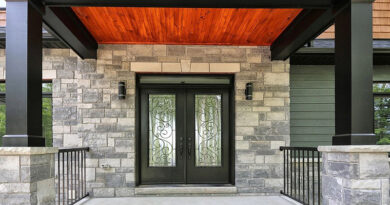PKHBA Five Steps to a Worry-Free Renovation or Addition
If you’d like to approach your renovation or addition with confidence, reduce the risk, minimize the inconvenience, and maximize the pleasure and added value that a well-conceived and executed project can add to your home, we have the guide for you. The RenoGuide is essential reading that will introduce you to the five steps to a successful renovation – including selecting a reputable, trustworthy renovator. Get the most out of your renovation – read before you renovate!
STEP 1: Carefully Planning Your Project
Be realistic about the time a project will take to get started and to complete; its full costs, including at least a 10% contingency for changes and unexpected conditions; and the impact the project will have on the daily operation of your home and family activities.
Some renovations and additions will require that you move out during construction. Other projects may allow you to live with the building project – but there will be inconvenience and disruption that you’ll have to plan for.
Major projects may require the services of an architect and other professionals such as engineers and heating contractors. Their drawings are not only required to obtain building permits and other municipal approvals, but they provide the basis for your renovation contractor to price the project.
If your project is likely to last more than a few weeks, it’s wise to discuss your project with neighbours. Most neighbours will be understanding and accommodating, especially if notified first.
Include a requirement for daily clean-up in your contract, so that your home, your street and nearby lawns don’t end up resembling a construction site.
STEP 2: Select a RENOMARK Renovator
Look for a RENOMARK renovator as your assurance that you have hired a professional who will provide high quality services.
It’s wise to contact a renovator first. Many RENOMARK renovators have in-house design professionals or relationships with architects and others who specialize in designing residential renovation projects. If you engage a designer first, bring a renovator into the team as early as possible so that the experience and expertise of each party can benefit your project.
At this stage your design professional or your renovator should be able to provide rough sketches satisfactory to give you confidence to proceed or to refine your plans. A preliminary sketch and a general indication of the quality of materials and workmanship you seek (the “specifications”) will allow the renovator to give you a budget estimate and an indication of the time it will take to finalize design, obtain building permits or other approvals, and complete the project.
Your RENOMARK renovator will select and manage experienced tradespeople for specific elements, such as electricians, plumbers, painters, or those who apply drywall, brick or stucco. Hiring a RENOMARK renovator is a one stop shop for your entire project.
STEP 3: Get a Written Contract
Once you are satisfied with a preliminary design, a preliminary budget and a realistic timetable, you are ready to commit to final drawings. When these are complete you are in a position to get an accurate estimate of the cost and to sign a contract with a renovator to perform the work.
When you make your decision to hire a renovator, get it in writing. Include the precise scope of work; the exact price, including a schedule of payments; a reasonable timetable for completing the work; and any instructions for protecting parts of the house not under construction.
If there is any difference of opinion between your renovator and your design professional about procedures or materials, this is the time to resolve it. It is important to avoid any significant changes during construction because this may cause delays and extra cost.
Avoid renovators who offer to do work without a contract in an attempt to avoid payment of the GST. This type of renovator may also not be paying worker’s compensation or carrying adequate insurance, leaving you at financial risk.
STEP 4: Check on Progress
Regular communication between you and your renovator may avoid problems.
During the course of a renovation or addition it is common for the homeowner to request changes or ask for additional work. These requests may affect the cost and time it takes to complete your project. It is important that you have a signed change order for all changes.
Make sure that you are aware of additional costs and that these changes are added to the contract. Better still, try to think of these things during the planning stage – you don’t want to be ordering additional flowers on the wedding day!
STEP 5: Discuss Your Concerns
Raise any concerns you may have without delay. Schedule meetings with your renovator when he or she can address your concerns without distraction.
Your renovator will discuss any concerns that you may have with the project or items that do not meet your expectations. But be flexible when minor changes occur that do not affect either the appearance or function of the job. Note any changes that are made as a result of such conferences, and do so in writing.
Bonus tips! Projects That Will Provide “Payback”
The Appraisal Institute of Canada regularly surveys its members to find out which renovation projects are most likely to result in “payback” when the house is sold.
In order, the following projects add value that may be recovered:
• Renovating a kitchen
• Upgrading the flooring
• Adding a main floor family room
• Renovating the basement
• Renovating a bathroom
• Replacing windows or doors
• Adding a fireplace
• Upgrading the heating system
For a RENOMARK Renovator near you, go to: www.pkhba.com www.pkhba.com/member-category/renovators
Call 705-930-1620 email info@pkhba.com.
Find out more about RENOMARK qualifications at www.renomark.ca




